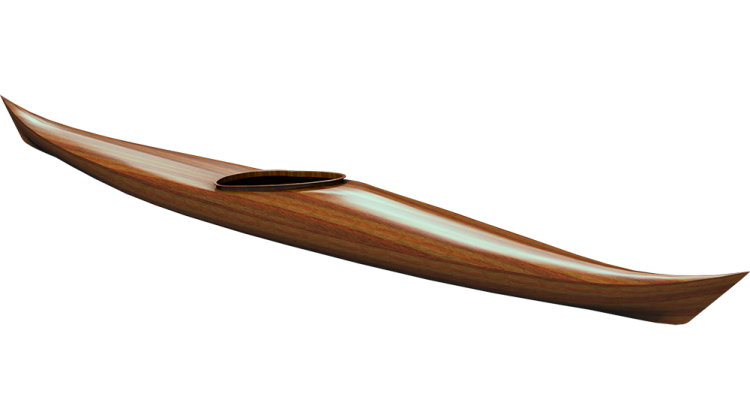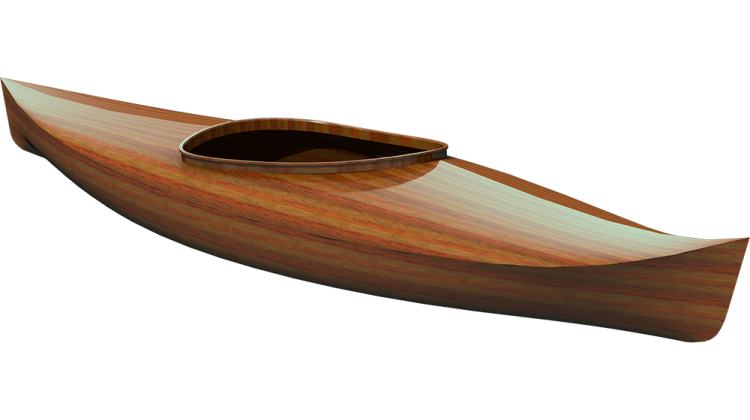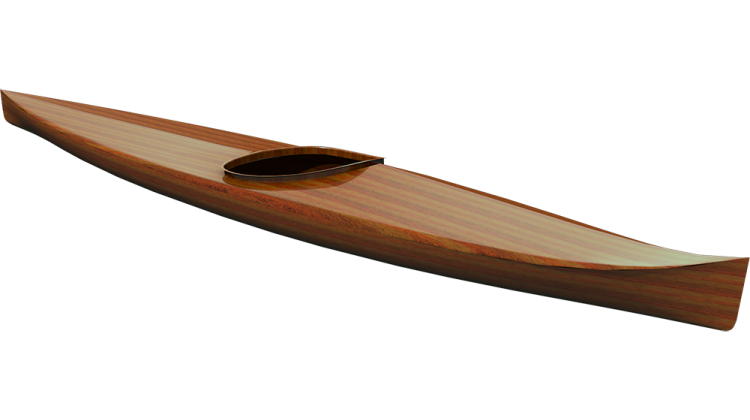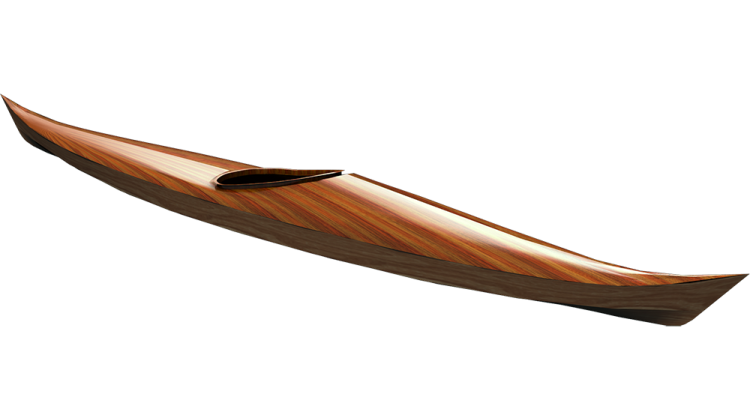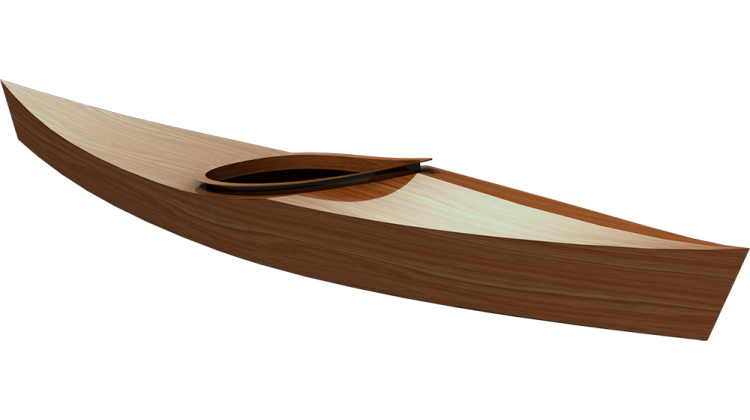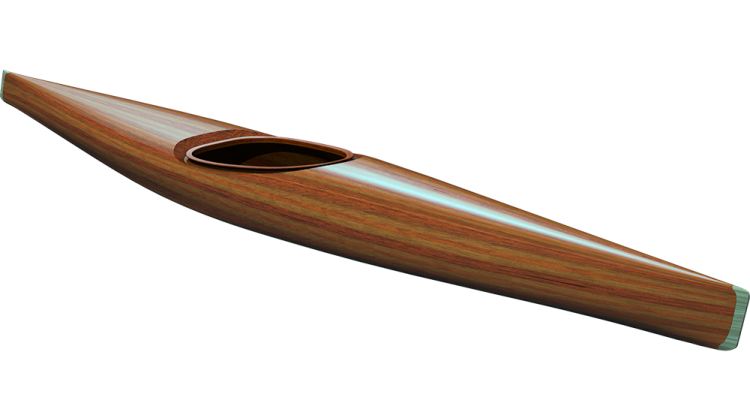In this episode of The Guillemot Kayaks Workshop, Nick Schade is joined by his friend Bill to continue building the Petrel Play SG Sea kayak using a kit from Chesapeake Light Craft. The goal is to guide viewers through the boat-building process, addressing questions and providing insights. The episode focuses on assembling the hull, breaking down the complex process into smaller, more manageable segments.
The initial step involves cutting copper wire into thirds, creating makeshift stitching wires to join the kayak panels. Nick emphasizes the importance of having a reliable set of wire cutters for this task. The wires are then collected in a cup for easy access during the assembly.
With the stitching wires prepared, the next phase involves laying down the full-length panels and stitching them together to create the keel line. The episode provides a step-by-step guide on securely stitching the panels, ensuring a proper fit. This process is crucial in establishing the shape of the kayak's hull.
Assembling the side panels follows, where Nick demonstrates the stitching of the side panels to each other. This step contributes to forming the kayak's overall structure, providing viewers with a clearer visual of the boat's shape. The copper wires play a pivotal role in holding the panels together temporarily until the final bonding with glue.
The importance of safely moving the panels is highlighted, emphasizing the need to handle them carefully to prevent any damage. This phase sets the stage for the subsequent steps in the assembly process.
The installation of forms, or molds, comes next, where Nick explains their role in shaping the kayak. Forms are strategically placed along the hull to guide the panels into the desired form. The video covers the process of installing the initial forms, ensuring they are correctly positioned for optimal results.
After placing the initial forms, the focus shifts to installing the remaining forms, ensuring they are evenly distributed along the length of the kayak. This step is critical for maintaining symmetry and achieving the intended design. The video provides a comprehensive walkthrough of the form installation process.
With the forms in place, the video concludes with stitching the bottom panels, bringing the hull assembly to a significant milestone. The kayak is now visibly taking shape, resembling an actual boat. However, Nick decides to save the major stitching for the next episode, creating anticipation for the subsequent steps in the boat-building journey.
In the outro, Nick encourages viewers to turn on notifications and subscribe for updates on upcoming episodes. He emphasizes the importance of support through kit purchases from Chesapeake Light Craft or acquiring plans directly from him for those interested in building their own boats. The episode ends with a preview of what to expect in the next installment, keeping the audience engaged in the ongoing boat-building adventure.
Hey, welcome back to The Guillemot Kayaks Workshop. I'm Nick Schade, and we're building the Petrel Play SG Sea kayak with a kit from Chesapeake Light Craft. It's my design, and they make the kit for this. They've supplied me the kit, so my friend Bill and I are working together to make this kit. You can see how it all goes together. Bill has never built a boat before, so he's here as a stand-in for you guys. Hopefully, he asks the questions you might ask, and in that way, you get those answers to those questions while we're building the boat.
As I said in the last episode, this whole process of putting the hull together was dragging out into a fairly long single episode. So, I decided to break it down into multiple smaller chunks to make it a little bit more digestible. I want to make it so you're not sitting in front of the computer for an hour and a half at a stretch. You're still free to do that. I'll be releasing these four episodes on consecutive days so you can watch them all at once if you want, or you can watch them one day at a time. Just trying to make it a little bit easier to get through.
In the last episode, we assembled the hull side panels, started getting those put together, did a little bit of stitching on the bottom. What I want to do in this episode is start to make the hull take shape. So, we'll start by laying down the bottom panel, stitch together the side panels to each other, lay them in the forms, and get the stealers put in place. We'll do a little bit more stitching in here, but really, this is just sort of getting the shape established. In the next episode, we'll do the major stitching, and in an episode following that, we will spot weld everything together. So, without further ado, let's get straight to assembling the hull.
Start Assembling Introduction:
Now we have our full-length panels, essentially, we're ready to start the process of assembling those into the hull. We're going to get into what we call the stitching part of the stitching glue. In the unboxing, we found this bag of wire and some other stuff. We're going to use this copper wire to stitch the panels together. I have a set of wire cutters here, and we're going to take this circle and cut it into thirds, every 120° or so. If your mind works that way, we can just take a chunk in the wire cutters and cut straight across. If you've got good wire cutters, taking one big chunk like that can work. If you're not as strong or your wire cutters aren't quite as good, divide it up into smaller pieces. Then cut that, and it's hard for you instead of using all your grip strength on this. I'm sticking it down on the workbench here and pressing down with my arm to make that cut. So, there's one set of wires. Cutting this all into thirds and again, divide it into smaller chunks so it's easier to cut. I'm holding on to the ends of these because the wire cutters can sort of shoot the pieces out the end. Now we have a bunch of wires, and we'll just collect those into a cup so they're easily accessible.
Cutting Stitch Wires to Length:
So now we have our full-length panels; essentially, we're ready to start the process of assembling those into the hull. We're going to get into what we call the stitching part of the stitching glue. In the unboxing, we found this bag of wire and some other stuff. We're going to use this copper wire to stitch the panels together. I have a set of wire cutters here, and we're going to take this circle and cut it into thirds, every 120° or so. If your mind works that way, we can just take a chunk in the wire cutters and cut straight across. If you've got good wire cutters, taking one big chunk like that can work. If you're not as strong or your wire cutters aren't quite as good, divide it up into smaller pieces. Then cut that, and it's hard for you instead of using all your grip strength on this. I'm sticking it down on the workbench here and pressing down with my arm to make that cut. So, there's one set of wires. Cutting this all into thirds and again, divide it into smaller chunks so it's easier to cut. I'm holding on to the ends of these because the wire cutters can sort of shoot the pieces out the end. Now we have a bunch of wires, and we'll just collect those into a cup so they're easily accessible.
Stitching Bottom Keel Line:
So now we have our full-length panels; essentially, we're ready to start the process of assembling those into the hull. We're going to get into what we call the stitching part of the stitching glue. In the unboxing, we found this bag of wire and some other stuff. We're going to use this copper wire to stitch the panels together. I have a set of wire cutters here, and we're going to take this circle and cut it into thirds, every 120° or so. If your mind works that way, we can just take a chunk in the wire cutters and cut straight across. If you've got good wire cutters, taking one big chunk like that can work. If you're not as strong or your wire cutters aren't quite as good, divide it up into smaller pieces. Then cut that, and it's hard for you instead of using all your grip strength on this. I'm sticking it down on the workbench here and pressing down with my arm to make that cut. So, there's one set of wires. Cutting this all into thirds and again, divide it into smaller chunks so it's easier to cut. I'm holding on to the ends of these because the wire cutters can sort of shoot the pieces out the end. Now we have a bunch of wires, and we'll just collect those into a cup so they're easily accessible.
Safely Moving Panels:
So, now we have our full-length panels; essentially, we're ready to start the process of assembling those into the hull. We're going to get into what we call the stitching part of the stitching glue. In the unboxing, we found this bag of wire and some other stuff. We're going to use this copper wire to stitch the panels together. I have a set of wire cutters here, and we're going to take this circle and cut it into thirds, every 120° or so. If your mind works that way, we can just take a chunk in the wire cutters and cut straight across. If you've got good wire cutters, taking one big chunk like that can work. If you're not as strong or your wire cutters aren't quite as good, divide it up into smaller pieces. Then cut that, and it's hard for you instead of using all your grip strength on this. I'm sticking it down on the workbench here and pressing down with my arm to make that cut. So, there's one set of wires. Cutting this all into thirds and again, divide it into smaller chunks so it's easier to cut. I'm holding on to the ends of these because the wire cutters can sort of shoot the pieces out the end. Now we have a bunch of wires, and we'll just collect those into a cup so they're easily accessible.
Stitching Side Panels:
Now we have our full-length panels; essentially, we're ready to start the process of assembling those into the hull. We're going to get into what we call the stitching part of the stitching glue. In the unboxing, we found this bag of wire and some other stuff. We're going to use this copper wire to stitch the panels together. I have a set of wire cutters here, and we're going to take this circle and cut it into thirds, every 120° or so. If your mind works that way, we can just take a chunk in the wire cutters and cut straight across. If you've got good wire cutters, taking one big chunk like that can work. If you're not as strong or your wire cutters aren't quite as good, divide it up into smaller pieces. Then cut that, and it's hard for you instead of using all your grip strength on this. I'm sticking it down on the workbench here and pressing down with my arm to make that cut. So, there's one set of wires. Cutting this all into thirds and again, divide it into smaller chunks so it's easier to cut. I'm holding on to the ends of these because the wire cutters can sort of shoot the pieces out the end. Now we have a bunch of wires, and we'll just collect those into a cup so they're easily accessible.
Installing Forms:
So now we have our full-length panels; essentially, we're ready to start the process of assembling those into the hull. We're going to get into what we call the stitching part of the stitching glue. In the unboxing, we found this bag of wire and some other stuff. We're going to use this copper wire to stitch the panels together. I have a set of wire cutters here, and we're going to take this circle and cut it into thirds, every 120° or so. If your mind works that way, we can just take a chunk in the wire cutters and cut straight across. If you've got good wire cutters, taking one big chunk like that can work. If you're not as strong or your wire cutters aren't quite as good, divide it up into smaller pieces. Then cut that, and it's hard for you instead of using all your grip strength on this. I'm sticking it down on the workbench here and pressing down with my arm to make that cut. So, there's one set of wires. Cutting this all into thirds and again, divide it into smaller chunks so it's easier to cut. I'm holding on to the ends of these because the wire cutters can sort of shoot the pieces out the end. Now we have a bunch of wires, and we'll just collect those into a cup so they're easily accessible.
Installing Remaining Forms:
So now we have our full-length panels; essentially, we're ready to start the process of assembling those into the hull. We're going to get into what we call the stitching part of the stitching glue. In the unboxing, we found this bag of wire and some other stuff. We're going to use this copper wire to stitch the panels together. I have a set of wire cutters here, and we're going to take this circle and cut it into thirds, every 120° or so. If your mind works that way, we can just take a chunk in the wire cutters and cut straight across. If you've got good wire cutters, taking one big chunk like that can work. If you're not as strong or your wire cutters aren't quite as good, divide it up into smaller pieces. Then cut that, and it's hard for you instead of using all your grip strength on this. I'm sticking it down on the workbench here and pressing down with my arm to make that cut. So, there's one set of wires. Cutting this all into thirds and again, divide it into smaller chunks so it's easier to cut. I'm holding on to the ends of these because the wire cutters can sort of shoot the pieces out the end. Now we have a bunch of wires, and we'll just collect those into a cup so they're easily accessible.
Stitching Bottom Panels:
So now we have our full-length panels; essentially, we're ready to start the process of assembling those into the hull. We're going to get into what we call the stitching part of the stitching glue. In the unboxing, we found this bag of wire and some other stuff. We're going to use this copper wire to stitch the panels together. I have a set of wire cutters here, and we're going to take this circle and cut it into thirds, every 120° or so. If your mind works that way, we can just take a chunk in the wire cutters and cut straight across. If you've got good wire cutters, taking one big chunk like that can work. If you're not as strong or your wire cutters aren't quite as good, divide it up into smaller pieces. Then cut that, and it's hard for you instead of using all your grip strength on this. I'm sticking it down on the workbench here and pressing down with my arm to make that cut. So, there's one set of wires. Cutting this all into thirds and again, divide it into smaller chunks so it's easier to cut. I'm holding on to the ends of these because the wire cutters can sort of shoot the pieces out the end. Now we have a bunch of wires, and we'll just collect those into a cup so they're easily accessible.
Outro:
Alright, so we've got the hull sort of taking shape here. It's in the forms, got a few stitches in, starting to take shape. It kind of looks like a boat, but I don't want to jump straight into the full-on stitching in this episode because it'll drag on a bit. So, I'm going to take a break right now and end this episode. In the next episode, we'll do that stitching, and the episode following that, we will do the spot welding. I'll be releasing the next episode hopefully tomorrow, and that way you don't have to wait to see how the process goes on. If you're interested in all of this, turn on notifications so you know when the next video comes out, hit subscribe so you're on the list to receive these videos, and hit like if you're liking this. The thing that really supports us, Chesapeake Light Craft and me, is buying a kit to build your own, getting a set of plans. You can get them from me or from Chesapeake Light Craft if you're interested in building any boat. They have all sorts of boat building materials and supplies, tools, whatever you might need. Or you can buy a set of plans directly from me for this boat or any of my other strip build boats, which Chesapeake Light Craft sells kits for all my designs, and you can get those directly through Chesapeake Light Craft.

